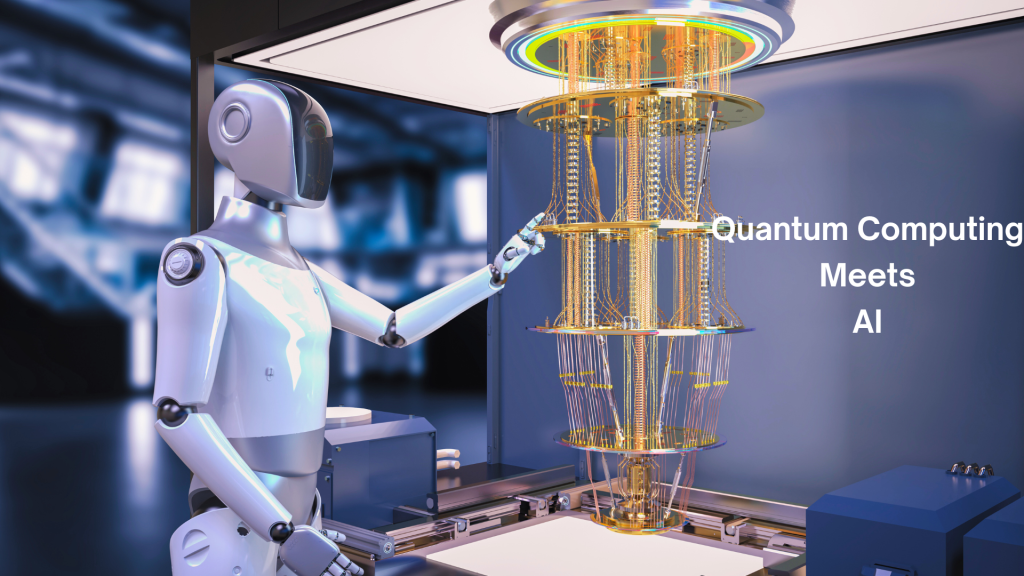Quantum Converging with AI: The Future of Cybersecurity.


Stephen Hudson
CEO @ BlockAPT
Recently, I had the privilege of attending The Economist’s annual event on “Commercialising Quantum Global”. The insights shared by leading academia and industry experts were nothing short of groundbreaking. As CEO of BlockAPT, I couldn’t help but reflect on the profound implications of quantum computing converging with Artificial Intelligence (AI) and what this means for the future of cybersecurity.
What is Quantum Computing?
Quantum computing is fundamentally different from classical computing. While traditional computers process information in binary bits (0s and 1s), quantum computers use quantum bits or qubits. These qubits can exist simultaneously as 0, 1, or both, thanks to the principles of superposition and entanglement. This unique capability enables quantum computers to perform complex calculations at exponentially faster rates, solving problems that would take classical computers centuries to crack.
The transformative potential of quantum computing is profound. From simulating molecular structures to optimising logistical networks and breaking complex cryptographic codes, the scope of impact spans across healthcare, finance, energy, and beyond.
It holds the potential to revolutionise everything from drug discovery to global supply chain management. Yet, as with any groundbreaking technology, it comes with inherent risks and challenges.
Quantum Computing: Moving Beyond Theory
Quantum computing has evolved rapidly from theoretical concepts to tangible advancements. While once considered a distant future technology, recent R&D breakthroughs have shown that qubits and their computational power are continuously improving. The once theoretical concepts are now proving real-world results.
Despite its potential, quantum computing still faces significant challenges. Stability remains a core issue, as qubits are highly susceptible to environmental noise and interference, leading to loss of coherence. Error rates are another major hurdle, maintaining accuracy in quantum calculations is problematic due to qubit instability and decoherence. However, the advancements, learning and improvements are occurring at pace.
The key question remains: How long before quantum computing becomes mainstream and commercially viable?
The ROI Challenge: Where Does Quantum Add Value?
One of the critical challenges with quantum computing lies in identifying the right use cases. Quantum should not be pursued merely because it can perform a task slightly faster than classical computing. The cost of building and maintaining quantum systems far exceeds that of traditional hardware. Therefore, it must be applied where it delivers exponential value and solves problems that are inherently unsolvable or impractical with current computing paradigms.
Quantum computing’s true ROI emerges in fields where massive data sets and complex calculations intersect, areas like protein folding, climate modeling, financial risk assessment, and cryptographic analysis. Deploying quantum for tasks easily handled by classical machines is not only inefficient but economically unjustifiable. Instead, the focus should be on leveraging its unique capabilities to address the most computationally intensive challenges.
The Dual-Edged Sword: Technology and Threats
While these advancements are promising, we must also recognise the darker side. Technological progress often invites exploitation. Quantum and AI will inevitably be leveraged by adversaries aiming to attack national critical infrastructure and corporate systems. This convergence could potentially escalate the threat landscape, compelling organisations to rethink their cybersecurity strategies.
CSMA: The Future of Cyber Defence
Cybersecurity Mesh Architecture (CSMA), advocated by Gartner, is set to become the cornerstone of modern cyber defence. It offers a flexible, modular approach that allows disparate security tools and systems to interoperate, creating a unified security posture. As organisations become increasingly hybrid and distributed, traditional monolithic security perimeters fail to provide adequate protection. CSMA’s decentralised framework enables adaptive, context-driven security policies, improving response times and threat detection.
At BlockAPT, our platform is built with the end goal of creating a self-defending, autonomous system. This approach aligns with the vision of CSMA, where cybersecurity evolves in real time, adapting to new threats without human intervention. By embedding AI-driven analysis and automated responses, BlockAPT’s platform provides continuous, proactive defence against emerging risks, with real time visibility.
Quantum Cryptography and BlockAPT’s Commitment
BlockAPT addresses this threat by integrating advanced quantum encryption techniques into our platform. We work with leading quantum technology partners who have developed NIST- certified encryption protocols (FIPS 140-3), ensuring our clients’ data remains protected both in transit and at rest.
We believe this approach enables our platform to not only solve today’s problems but tomorrows.
The Final Countdown
The convergence of AI and quantum computing will reshape cybersecurity. As adversaries become more sophisticated, companies that hesitate to invest in cutting-edge defence will be vulnerable. BlockAPT’s mission is to empower organisations to build robust, future-proof defences, combining next-gen hardware and AI-driven software with a proactive, resilient security framework.
The countdown has begun. Will organisations rise to the challenge or fall prey to the naivety of outdated defences? BlockAPT is not waiting. We are continually innovating and preparing for the future, ensuring that when the clock strikes, we are ready. The clock is ticking, and BlockAPT is prepared to lead the way.